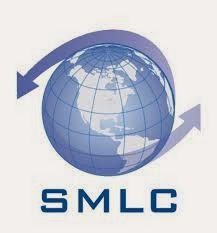As every year, ASQ has released the 2013 Manufacturing Outlook Survey that was fielded to respondents in the aerospace, automotive, food, medical device, pharmaceutical and utility industries, among others.
After reading the summary on the ASQ blog, an interesting fact reflected that “only 13% of respondents use smart manufacturing, but 82% of those who do experience more efficiency“. Since my field of expertise is not the manufacturing area, I was caught by the concept of ‘smart manufacturing” or “SM” and wanted to learn a little bit more about it.
The Smart Manufacturing Leadership Coalition defines SM as follow:
“SM is the integration of network-based data and information that provides the real-time understanding, reasoning, planning and management of all aspects of a manufacturing and supply chain enterprise. SM is facilitated through use of advanced sensor-based data analytics, modeling and simulation in real-time, where all information is available when it is needed, where it is needed and in the form it is most useful – infusing manufacturing intelligence throughout the life-cycle of design, engineering, planning and production.”
In other words, SM marries industrial automation, IT – information technology (or smart technologies like cloud computing, business intelligence, big data analytics, mobility, etc.) and human ingenuity to bring about a rapid revolution in the development and application of manufacturing intelligence to every aspect of business; with the overall objective to transform traditional factories from cost centers into profitable innovation center.
3 Phases
The process of implementing SM has 3 main phases:
1. Plant- and Enterprise-wide Integration: SM will interconnect and better harmonize individual stages of manufacturing production to advance plant-wide efficiency. The integration of all manufacturing data throughout individual plants and across enterprises will facilitate significant and immediate improvements in costs, safety and environmental impacts.
2. From Plant-wide Optimization to Manufacturing Intelligence: Connecting in-plant modeling and data technologies with high performance computing platforms will make it possible to build significantly higher levels of manufacturing intelligence and connect it throughout the factory that will enable flexible manufacturing, optimal production rates, and faster product customization. It also will connect factory-specific information to data throughout the supply chain — from raw material availability and customer demand through the delivery of finished goods, facilitating energy-intensive activities during low-demand periods and slow production during peak energy demands.
3. Manufacturing Knowledge Will Inevitably Disrupt Markets: As that manufacturing intelligence grows, it will inspire innovations in processes and products that comprise smart manufacturing’s promise – a major market disruption. This most dramatic and competitively vital third phase of implementing SM will come from innovation spurred by this growing body of manufacturing knowledge. These will not be incremental or gradual changes, they will be game-changing, market-disruptive innovations in products and processes. Changes at this phase will push down prices, open new markets and offer a broader array of choices to a wider range of middle class consumers.
Why SM? Benefits
- Reduces time to market
- Leverages dynamic, demand-driven economics
- Drives higher export markets
- Provides global competitive edge
- Enables progress toward zero incidents and emissions performance
- Takes advantage of integrated energy management and the smart grid
- Moves toward enterprise sustainability
- Enables agile response to consumer demand
Product innovations will arise from the creative use of SM intelligence gathered from every point of the supply chain, from consumer preferences through production and delivery mechanisms. The knowledge businesses gain through process innovations will transfer far beyond the doors of manufacturing into the services sector at every level, delivering better pricing through improved process efficiency and economies of scale. That knowledge transfer will, in turn, yield broader use of SM technology — the application of new technology and new information to disparate fields.
SM Platform by SMLC
The Smart Manufacturing Leadership Coalition – SMLC is a non-profit organization comprised of manufacturing practitioners, suppliers, and technology companies, manufacturing consortia, universities, government agencies and laboratories; committed
Its goal is to overcome barriers to the development and deployment of Smart Manufacturing (SM) Systems through an implementation agenda for building a scaled, shared infrastructure called the Smart Manufacturing Platform (SM Platform): a cloud-based, open-architecture platform that integrates existing and future plant level data, simulations and systems across manufacturing seams and orchestrate business real time action.
It is believed that this new way of working will fundamentally change how products are invented, manufactured, shipped and sold. It will improve worker safety and protect the environment by making zero emissions, zero-incident manufacturing possible. It will help keep jobs by keeping manufacturers competitive in the global marketplace.
Keith Nosbusch, CEO of Rockwell Automation said in the 2013 Smart Manufacturing Summit:
“The combination of automation and information is the next wave of productivity. That seamless integration of the enterprise, the supply chain and the plant floor is becoming the next wave of competitive differentiation”
You can view Nosbusch’s entire presentation here.
So, if you are working in a manufacturing company, Are you using SM? Which pros and cons have you found because of the use of the SM? Share with me!
REFERENCES
All the information displayed in this post was extracted from smartmanufacturingcoalition.org and smartmanufacturing.com






1 Comment
Richard C. Lambert · August 12, 2015 at 2:38 am
As every year, ASQ has released the 2013 Manufacturing Outlook Survey that was fielded to respondents in the aerospace, automotive, food, medical device, pharmaceutical and utility industries, among others. ppe
Comments are closed.